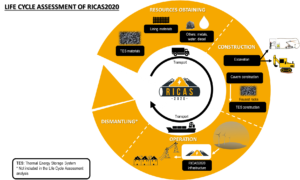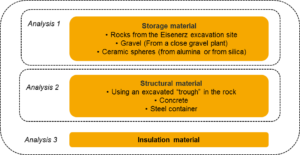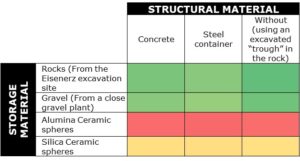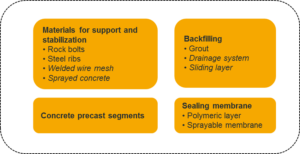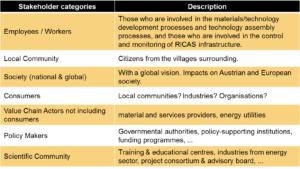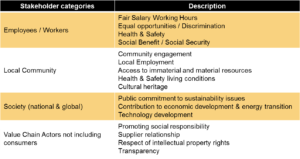LifeCycleAssessment (LCA) and Social Analysis
During the project execution, the LCA methodology is applied to the RICAS project in order to assess each design step in terms of environmental behaviour. And at the end of the project the environmental analysis will provide a global overview of the environmental impact of this energy storage system.
General scope and system boundaries for the RICAS2020 Life Cycle Assessment:
SCOPE AND SYSTEM BOUNDARIS OF
-
ENVIRONMENTAL ASSESSMENT ON TES MATERIALS
Goals
At the initial stage of the TES infrastructure design, environmental analysis has been done:
- To identify which of the candidate materials have the most suitable environmental profile for TES construction. And to determine which is the best combination (storage materials, structural materials and insulation materials) considering the different types of materials for the TES construction.
- To quantify the potential environmental impacts of each candidate material.
Scope for the environmental assessment of TES materials
Three different analysis have been performed considering the following scope:
Main results
- The best scenario is the combination of the rocks from the excavation site without using structural materials. The storage material with the highest potential environmental impact are the alumina ceramic spheres.
- The worst scenarios are those that include alumina ceramic spheres as storage material, due to the high environmental impact of the aluminium oxide. If the technical conditions require the use of ceramic spheres, the scenarios with silica spheres are recommended, due to their environmentally friendly profile than alumina spheres scenarios.
Potential environmental impact of TES material
-
ENVIRONMENTAL ASSESSMENT OF CAVERN LINING MATERIAL
Goals
- To quantify the potential environmental impacts of the different lining materials: materials for support and stabilization, concrete precast segments, backfilling and sealing membrane.
Scope for the environmental assessment of cavern lining materials
Inventory data
This task is on-going and the data are collected in close collaboration with SINTEF (RICAS partner).
-
ENVIRONMENTAL ASSESSMENT OF LASER EXCAVATION
Goals
- To quantify the potential environmental impacts of laser excavation
- To compare laser excavation with the current process (drill and blasting)
Scope for the environmental assessment of excavation processes
-
SOCIAL IMPACT ASSESSMENT OF RICAS2020 INFRASTRUCTURE
This task assesses the social impacts generated by RICAS2020 infrastructure taking into account the potential effects (positive and negative) at different stakeholder groups (employees, users, local community and global society).
Methodology used: Based on Social Life Cycle Analysis (S-LCA)

